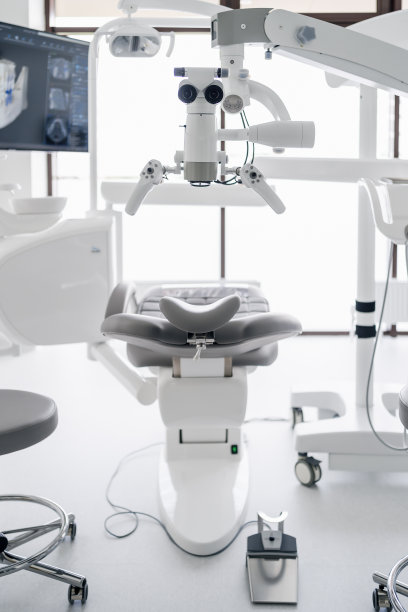Revolutionary Advances in Dental Implants Transforming Oral Health and Restoring Confidence for Patients Worldwide
Summary: The landscape of dental care is undergoing a remarkable transformation through revolutionary advances in dental implants. These breakthroughs are not only enhancing the oral health of patients worldwide but also empowering them by restoring their confidence. By exploring innovations in implant materials, surgical techniques, patient-centered approaches, and technological integration, this article delves into the profound impacts on both individual lives and overall dental practices. Highlights include improvements in implant longevity and comfort, minimally invasive surgeries, dedication to personalized care, and the incorporation of cutting-edge technology. Collectively, these advancements are reshaping the way dental care is delivered, making it more effective, efficient, and accessible.
1. Innovations in Implant Materials and Design

The first significant advancement in dental implants is the development of innovative materials and design. Traditional implant materials, often titanium, have long been the mainstay. However, scientists and engineers are exploring new composites that can enhance biocompatibility and reduce the risk of rejection. These materials are also being designed to mimic bone structure more closely, promoting better integration with the jawbone.
Furthermore, advanced surface treatments have improved the osseointegration process, allowing implants to bond more effectively with existing bone. Roughened surfaces or coatings with bioactive substances accelerate healing and offer greater stability over time. This shift in material science not only provides patients with a more secure fit but also enhances the longevity of their dental implants.
Moreover, customized designs using 3D printing technology allow for tailored implants that fit each patients unique dental anatomy. This personalization leads to improved aesthetics and function, addressing the specific needs of patients and ultimately leading to higher satisfaction rates.
2. Minimally Invasive Surgical Techniques
Minimally invasive techniques represent another revolutionary leap in dental implant surgery. Traditional methods often involved significant trauma to the surrounding tissues, leading to longer recovery times and increased discomfort. In contrast, new surgical approaches, such as guided implant surgery and flapless procedures, result in less bleeding and swelling, promoting quicker healing.
Guided surgery utilizes advanced imaging techniques like CBCT (Cone Beam Computed Tomography) to create precise surgical plans and templates, allowing practitioners to place implants with remarkable accuracy. This procedure minimizes the need for incisions while ensuring optimal positioning, enhancing the overall outcomes for patients.
Additionally, sedation options have considerably evolved, allowing for more comfortable experiences in the dental chair. With reduced anxiety and pain associated with procedures, patients often report greater satisfaction and willingness to undergo necessary treatments, leading to better oral health outcomes.
3. Patient-Centered Care Approaches
The emphasis on patient-centered care has transformed dental practices. Modern approaches prioritize the unique needs and concerns of individual patients, creating a more supportive and informative environment. Dentists now engage patients in shared decision-making about their treatment options, which can significantly reduce patient anxiety and improve compliance.
Education is also a cornerstones of patient-centered care. Practitioners are using digital platforms to offer comprehensive information, from pre-surgical consultations to post-operative care instructions, enhancing patient understanding and empowerment. This accessibility to information leads to patients feeling more valued and confident in their care.
Moreover, follow-up care has become increasingly personalized. Utilizing digital communication tools, dental professionals can check in with patients post-surgery to address concerns or complications, further promoting a sense of care that extends beyond the treatment chair.
4. Integration of Technology in Dental Practice
The integration of advanced technology into dental practice has revolutionized the ways implants are planned and executed. Tools like intraoral scanners have replaced traditional molds, creating a more comfortable experience while providing highly accurate data for designing implants. The shift to digital workflows not only streamlines the process but provides a level of precision that enhances surgical outcomes.
Moreover, advancements in artificial intelligence and machine learning are beginning to play a role in predicting treatment outcomes. These technologies analyze vast amounts of data, allowing clinicians to base their decisions on evidence, thus contributing to better patient care overall.
The use of tele dentistry is also gaining traction, facilitating remote consultations and follow-ups. This capability broadens access to dental care, particularly for patients in remote areas, effectively breaking down barriers and ensuring everyone has the opportunity for high-quality dental treatment.
Summary:
In conclusion, the revolutionary advances in dental implants are profoundly transforming oral health and restoring confidence among patients globally. By focusing on innovative materials, minimally invasive techniques, patient-centered care, and the integration of technology, dental professionals are reshaping patient experiences and outcomes. These advancements not only signify progress in dental science but also reflect a commitment to improving lives through enhanced oral health.
This article is compiled by Vickong Dental and the content is for reference only


